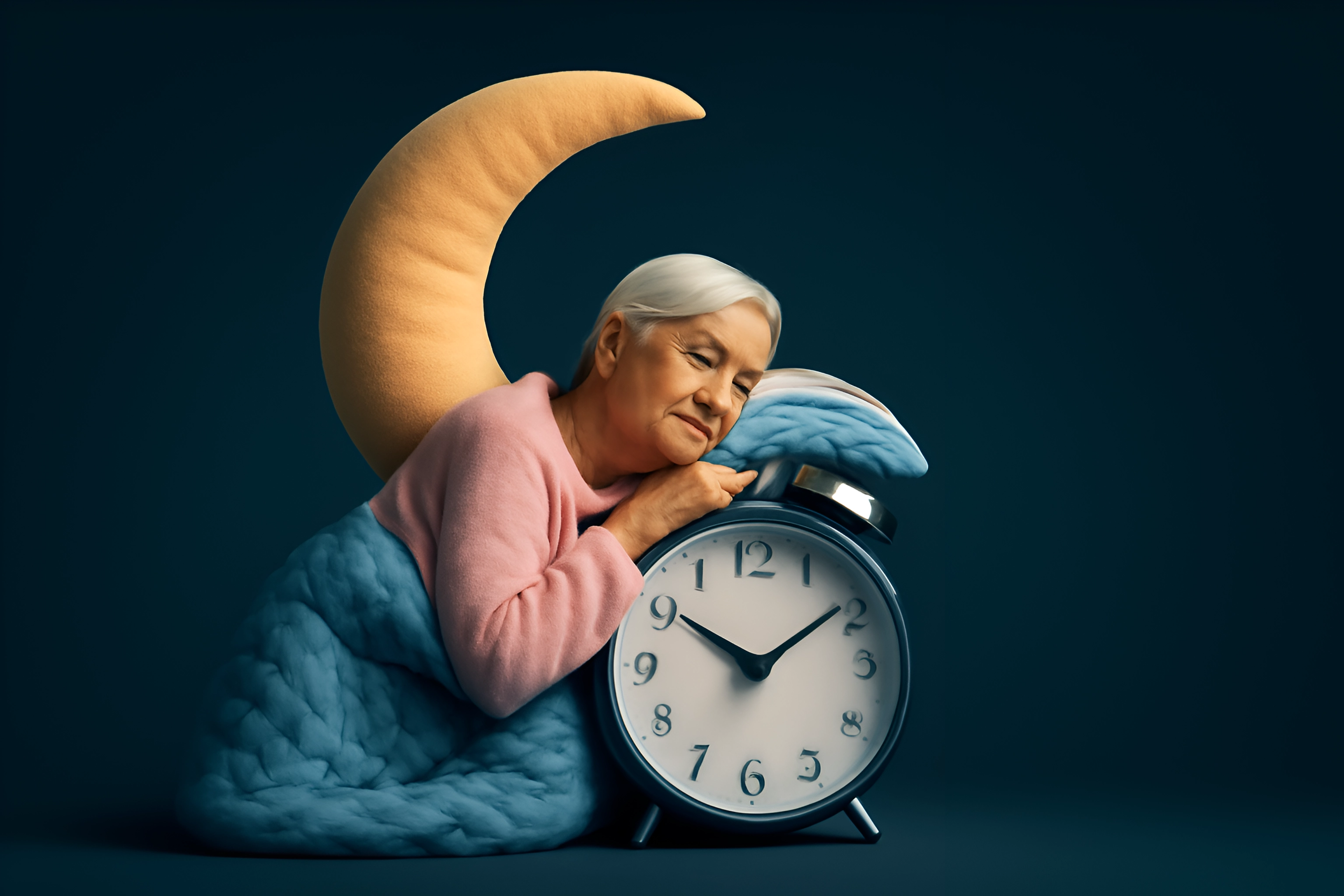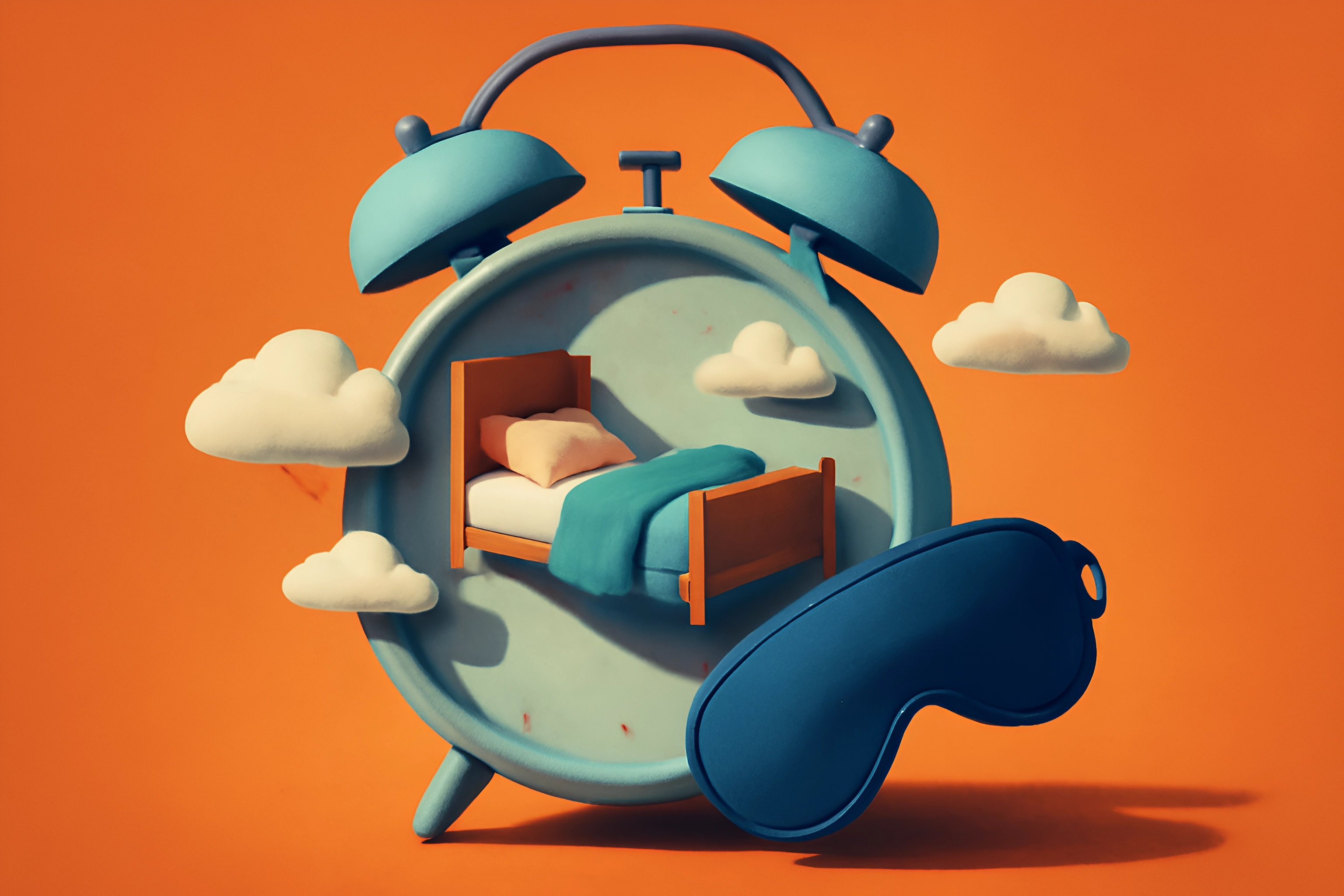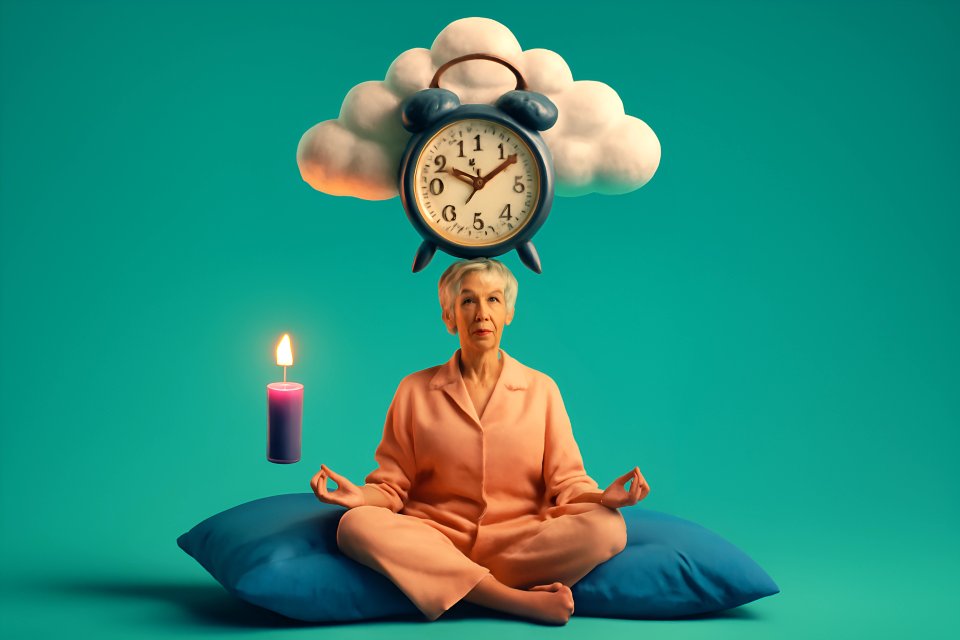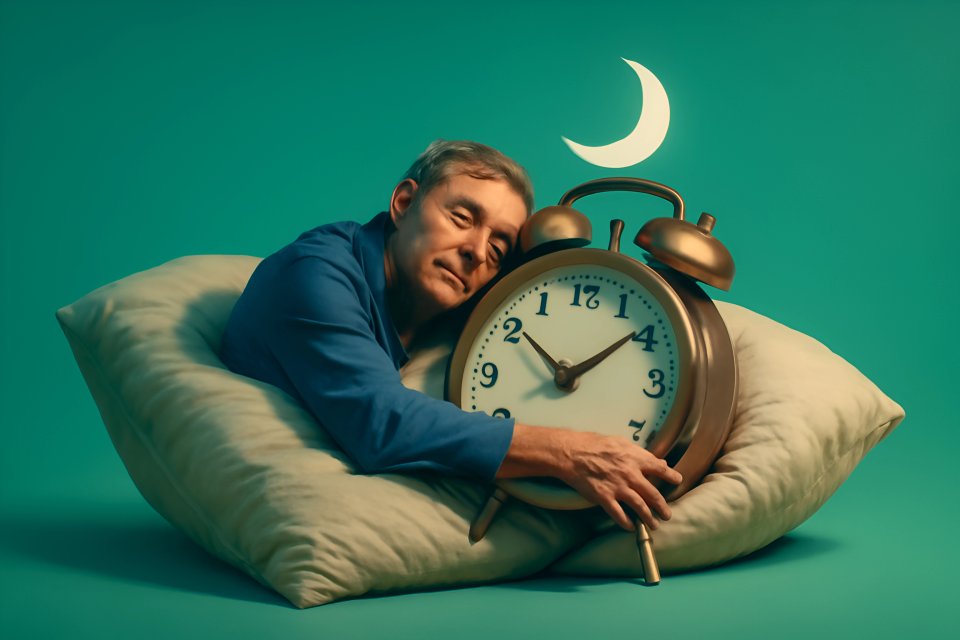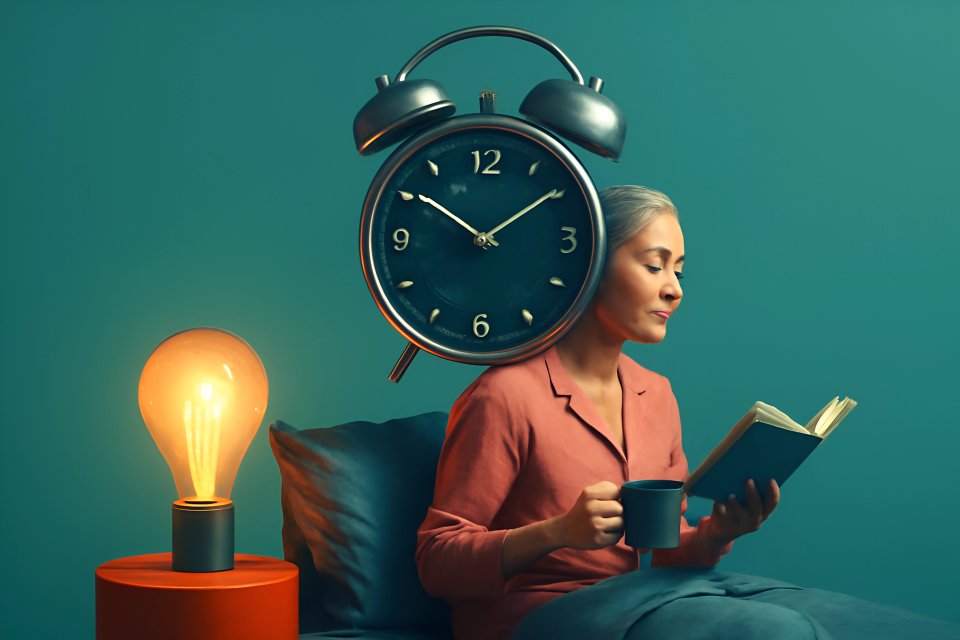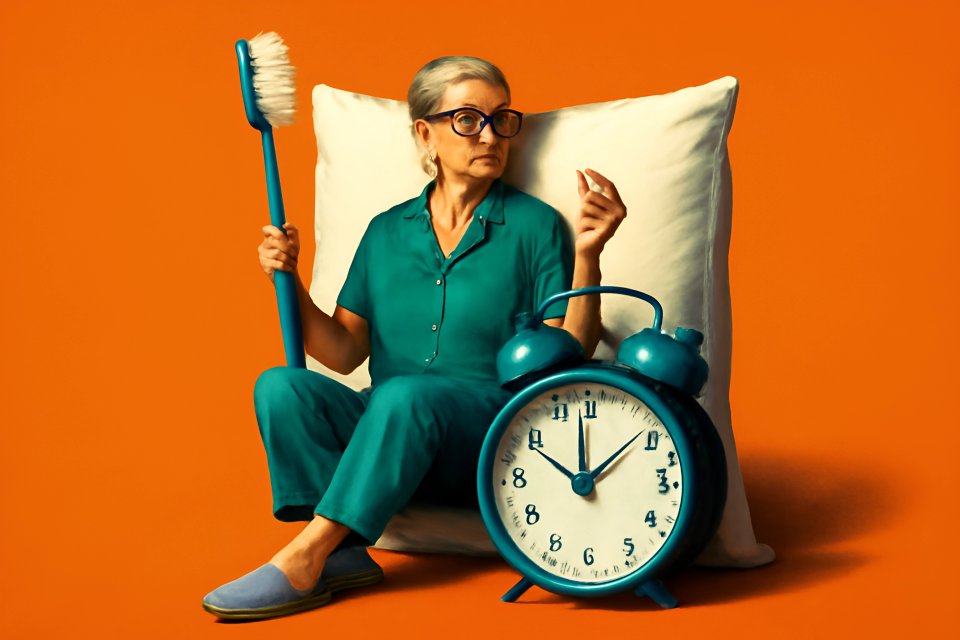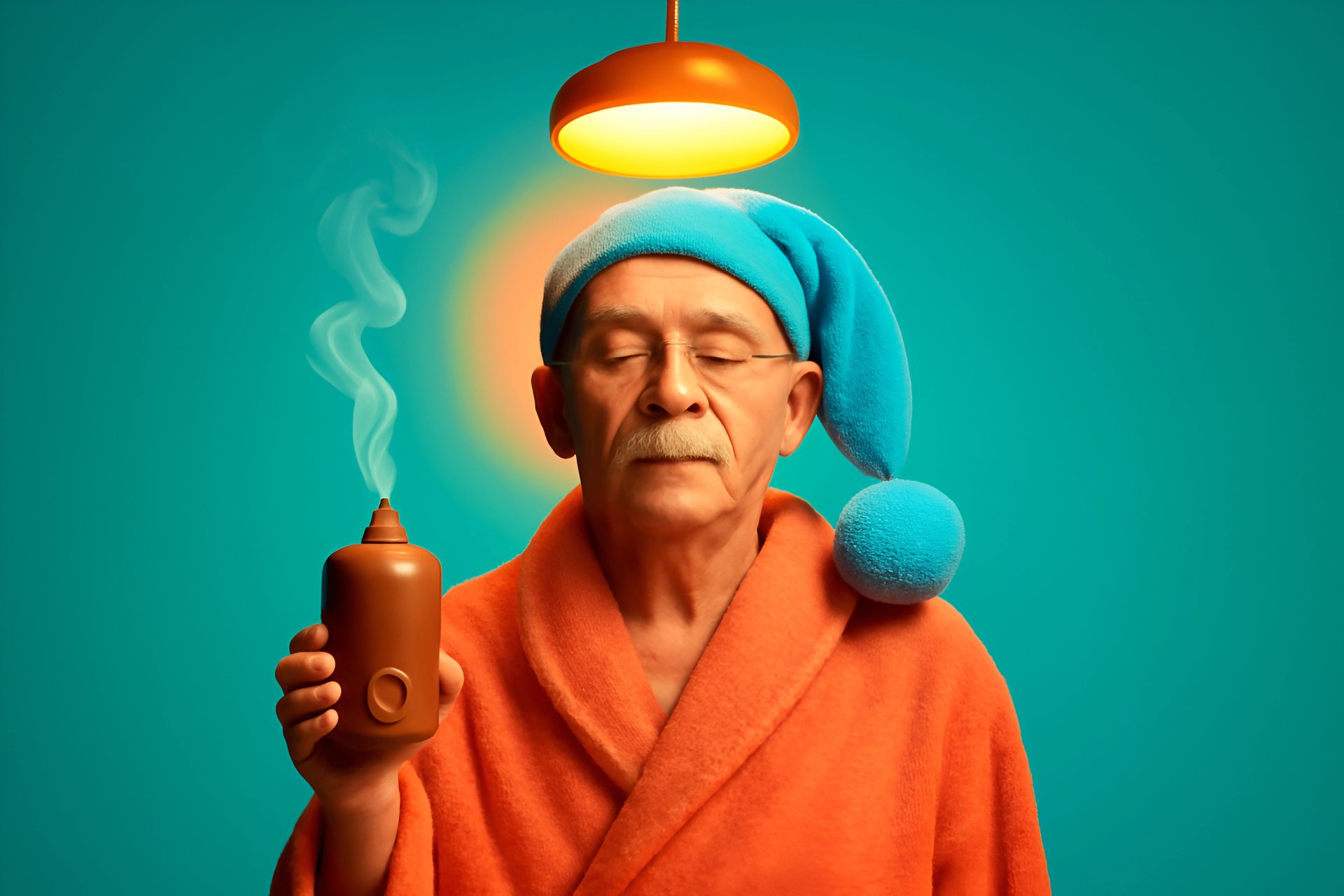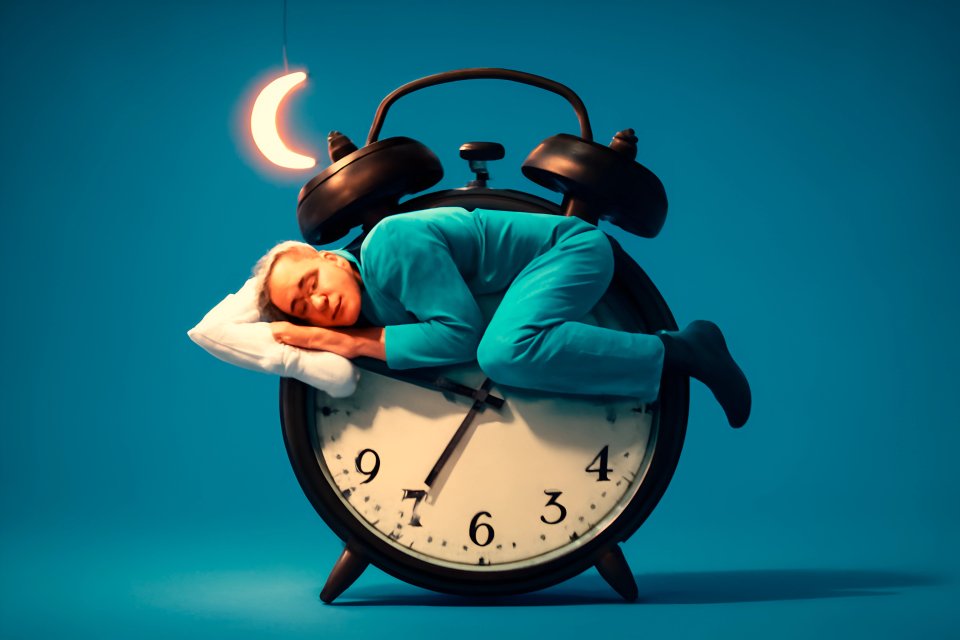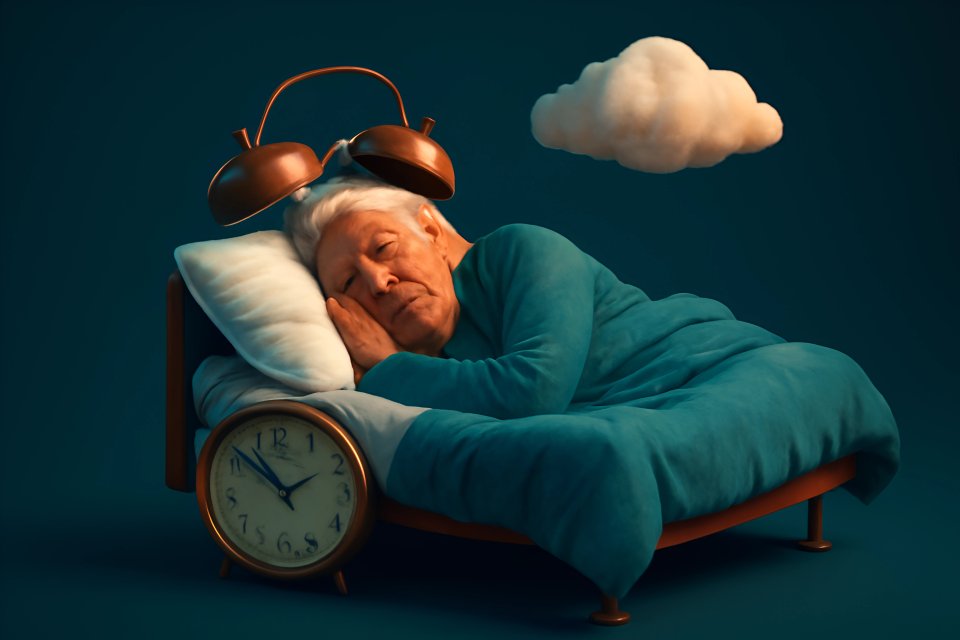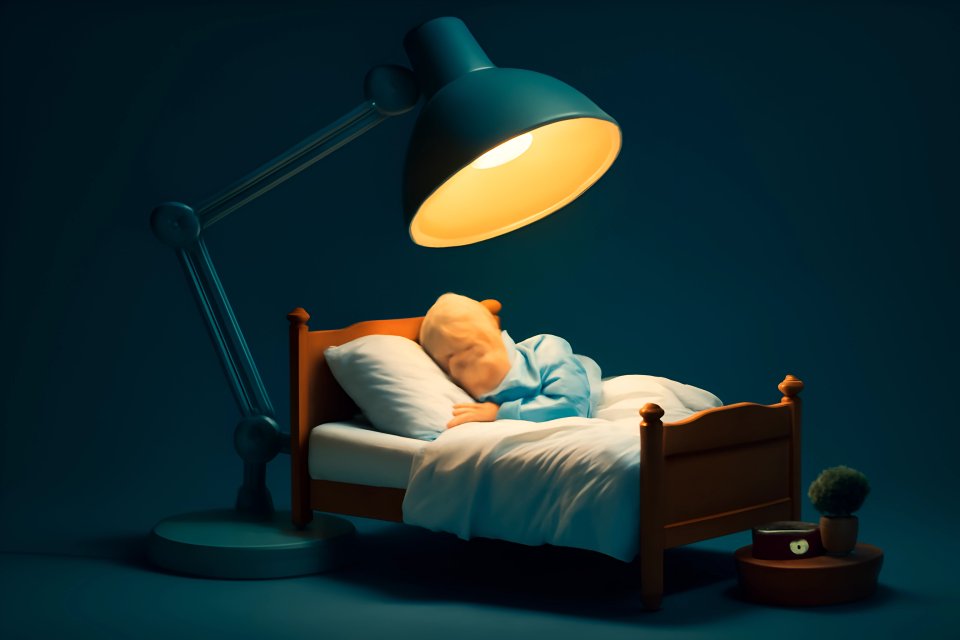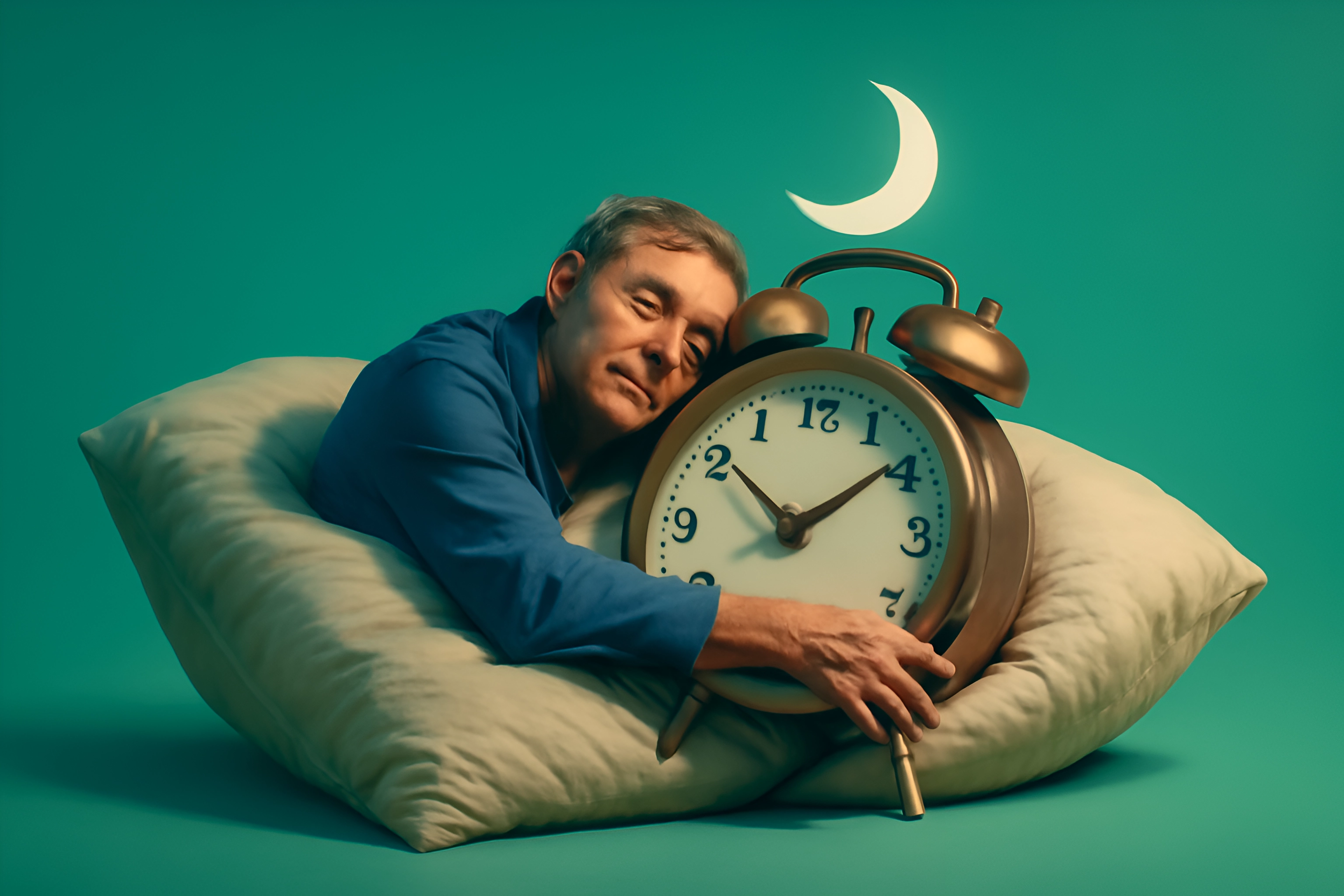
Introduction: The Nightly Struggle is Real, But So is the Solution
It's 3 AM. You're wide awake, staring at the ceiling, and your mind is racing. You've tried the warm milk, you've counted the sheep, and you've sworn off coffee after noon, but quality sleep still feels maddeningly out of reach.
If this sounds familiar, you are not alone. As we navigate our 50s and beyond, our sleep patterns naturally change due to hormonal shifts, a decrease in the body's melatonin production, and a lifetime of accumulated stress. In fact, studies show that a staggering 10-30% of older adults experience significant insomnia, but this is not a life sentence you have to accept.
This isn't another list of basic sleep tips you've already heard a thousand times. We're moving beyond avoid caffeine to give you advanced, actionable strategies specifically designed to address the root causes of insomnia in your 50s and beyond. It's time to stop fighting the night and start reclaiming your energy, your focus, and your vitality.
Why "Just Go to Bed Earlier" Isn't Enough: Understanding Sleep After 50
Have you ever wondered why you get sleepy on the couch at 9 PM, only to be wide awake at 3 AM? The answer lies in biology, not willpower. Our internal clock, or circadian rhythm, can undergo a "phase advancement" as we age, shifting our sleep-wake cycle earlier and leading to those frustratingly premature awakenings.
This biological shift is often compounded by powerful hormonal fluctuations. For women, the decline in estrogen during menopause can trigger night sweats and disrupt deep sleep, with 40-60% of postmenopausal women reporting sleep problems. Men experience a similar, albeit more gradual, decline in testosterone that can also fragment sleep architecture.
On top of it all, our bodies naturally produce less of the sleep hormone melatonin as we get older. Add in the increased likelihood of physical discomforts from aches and pains or frequent nighttime bathroom trips—a condition called nocturia that affects up to 80% of seniors—and it becomes clear why simple advice falls short. To find real insomnia solutions for older adults, we need a more sophisticated approach.
Advanced Sleep Environment Optimization: Your Bedroom as a Sleep Sanctuary
Creating a sleep-conducive environment is about more than just blackout curtains. It's about actively engineering your bedroom to send powerful biological signals to your brain that it's time for deep, restorative rest. Think of it as building your personal sleep sanctuary.
Master Your Light Exposure
Light is the single most powerful tool for resetting your internal clock. Start your day by getting 10-15 minutes of direct morning sunlight within an hour of waking. This simple act helps anchor your circadian rhythm and signals to your brain that the day has begun, which in turn helps regulate your sleep cycle for the night ahead.
In the evening, you must do the opposite by waging a war on blue light. An hour or two before bed, switch the lamps in your bedroom and living room to amber or red-light bulbs. Unlike the harsh blue light from screens and standard bulbs, these warmer wavelengths do not suppress your body's natural melatonin production, making it one of the most effective restful sleep routines for 50+.
Strategic Temperature Control
Your core body temperature needs to drop by a couple of degrees to initiate and maintain sleep, a process that can become less efficient with age. You can facilitate this crucial drop by setting your thermostat to a cool 60-67°F (15-19°C). According to the Sleep Foundation, this is the optimal temperature range for sleep.
For an extra edge, consider investing in a cooling mattress pad or topper. These technologies can make a significant difference, especially if you struggle with night sweats. Also, opt for bedding made from breathable, natural fibers like bamboo, linen, or cotton to help wick away heat and moisture throughout the night.
Upgrade Your Soundscape
If you've found basic white noise to be ineffective, it's time for an upgrade. Research suggests that Pink Noise, which sounds like steady rain or wind, is more effective at promoting deep, slow-wave sleep. One study found that pink noise could help older adults improve their sleep quality.
Alternatively, Brown Noise has a lower, deeper pitch, like a strong waterfall or a gentle roar. It is particularly effective at masking disruptive, low-frequency sounds like traffic or a snoring partner. You can find both pink and brown noise on apps like Calm or Headspace, or on dedicated sound machines.
Next-Level Lifestyle Tweaks: Insomnia Solutions for Older Adults
Your daily habits have a profound impact on your nightly rest. By making a few strategic, next-level adjustments to your routine, you can provide your body with the right building blocks for sleep and finally break the cycle of frustrating nights. These are the sleep strategies for seniors that truly move the needle.
The Strategic Pre-Sleep Snack
Forget the old rule about not eating before bed; it's about eating the right thing. About 90 minutes before you plan to sleep, have a small snack that combines complex carbohydrates with a little bit of protein. This combination helps make the sleep-inducing amino acid tryptophan more available to your brain.
Excellent choices include a small bowl of oatmeal, a few whole-grain crackers with a tablespoon of almond butter, or a banana. For a powerful boost, consider a small glass of tart cherry juice. Studies have shown that the natural melatonin in tart cherries can significantly improve sleep duration and quality in adults with insomnia.
Rethink Your Evening Wind-Down
If your mind starts racing the moment your head hits the pillow, you need to give your worries an earlier eviction notice. Schedule 15 minutes of "Worry Time" in the early evening, a few hours before bed. Use a journal to perform a "brain dump"—write down every anxiety, concern, and to-do list item that's taking up mental space, a technique that can reduce stress and promote relaxation.
This simple act of externalizing your thoughts prevents them from ambushing you in the quiet of the night. It tells your brain that these issues have been acknowledged and can be dealt with tomorrow. This is one of the most powerful advanced tips for overcoming insomnia over 50.
Mindful Movement (Timing is Everything)
Exercise is fantastic for sleep, but timing is critical. Keep your vigorous workouts—like running, HIIT, or heavy lifting—to the morning or early afternoon. An intense workout too close to bedtime can raise your core body temperature and cortisol levels, making it harder to fall asleep.
In the evening, shift your focus to mindful, restorative movement. A gentle, 15-minute routine of restorative yoga or simple stretching can work wonders for releasing physical tension stored in your hips, shoulders, and back. This calming practice helps activate your body's "rest and digest" system, preparing you perfectly for a peaceful night.
Mind-Body Techniques to Tame a Racing Mind
Often, the biggest obstacle to sleep isn't physical—it's a mind that simply won't shut off. The anxiety about not sleeping creates a self-fulfilling prophecy. The following evidence-based techniques are designed to break that cycle by calming your nervous system and reframing your relationship with sleep.
The 4-7-8 Breathing Technique
This simple yet profound breathing exercise is a natural tranquilizer for the nervous system. Developed by Dr. Andrew Weil, it is a cornerstone of breathing techniques for relaxation. Here’s how to do it: sit or lie down comfortably, place the tip of your tongue against the ridge of tissue just behind your upper front teeth, and exhale completely through your mouth, making a whoosh sound.
Now, close your mouth and inhale quietly through your nose to a mental count of four. Hold your breath for a count of seven. Then, exhale completely through your mouth, making a whoosh sound to a count of eight. Repeat this cycle three more times to feel a wave of calm.
Progressive Muscle Relaxation (PMR)
Progressive Muscle Relaxation is a powerful exercise that teaches you to recognize and release hidden physical tension. Lying in bed, start with your toes. Tense the muscles in your feet and toes as tightly as you can for five seconds, focusing on the feeling of tension.
Then, release the tension completely and suddenly, and notice the feeling of deep relaxation for ten seconds. Work your way up your body, systematically tensing and releasing each muscle group: your calves, thighs, glutes, abdomen, arms, and finally, your face. This practice makes you acutely aware of the difference between tension and relaxation, giving you active control over it.
Try "Paradoxical Intention" (A CBT-I Trick)
This may sound crazy, but it's one of the most effective tricks from Cognitive Behavioral Therapy for Insomnia (CBT-I). Instead of desperately trying to fall asleep—which only creates performance anxiety—you do the opposite. Lie in bed in your comfortable sleep position and gently try to stay awake.
Don't use screens or read a book; just lie there with the quiet intention of remaining awake. This counter-intuitive approach removes the pressure and anxiety associated with falling asleep, often allowing your body's natural sleep drive to take over peacefully. You're taking the fight out of it, and in doing so, you win.
Knowing When to Consult a Professional
While these advanced strategies can be life-changing, it's crucial to recognize when insomnia might be a symptom of an underlying medical issue. Your safety and long-term health are paramount. You are not failing if you need to seek professional help; you are being a smart and proactive advocate for your own well-being.
It's time to see a doctor if you experience any of the following red flags. If your partner reports that you snore loudly, gasp, or stop breathing during the night, it could be a sign of sleep apnea, a serious condition requiring medical attention. If you have an uncontrollable urge to move your limbs, especially at night, you may have restless legs syndrome.
If your insomnia persists for more than a few weeks and is significantly impacting your mood, energy, and ability to function during the day, it's time to make an appointment. A healthcare provider can review your medications, screen for underlying conditions, and refer you to a sleep specialist or a therapist trained in Cognitive Behavioral Therapy for Insomnia (CBT-I), which is considered the gold-standard treatment with a 70-80% success rate.
Conclusion: Your Best Nights Are Still Ahead of You
Reclaiming your sleep after 50 isn't about finding a single magic bullet. It's about building a personalized arsenal of advanced, science-backed tools that address the unique changes happening in your body. By mastering your light exposure, scheduling "worry time" to clear your mind, and using powerful mind-body techniques like the 4-7-8 breath, you can take back control from insomnia.
At FitOverFifty, we believe that aging with vitality means taking proactive control of your health. By implementing these advanced sleep strategies, you're not just chasing sleep—you're investing in your energy, your mental clarity, and your overall well-being for years to come. You have the power to create the restful nights you deserve.
What's one new strategy you're excited to try tonight? Share your goals and experiences in the comments below—let's support each other on the journey to better rest.







